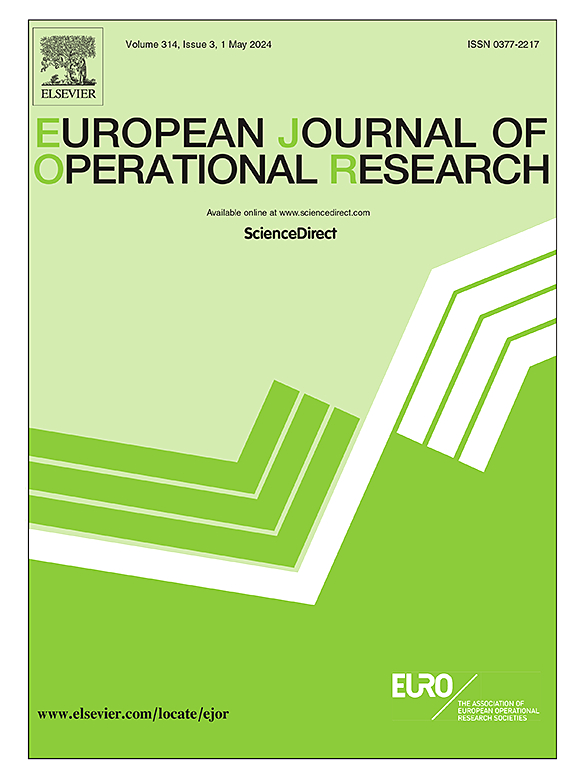基于条件傅立叶余弦法的随机波动模型精确模拟
IF 6
2区 管理学
Q1 OPERATIONS RESEARCH & MANAGEMENT SCIENCE
引用次数: 0
摘要
基于Gil-Pelaez公式精确模拟随机波动模型的传统方法存在许多研究人员和实践者注意到的实施问题。特别是,尽管传统上认为这种方法是精确的,但这种方法很难控制误差。蒙特卡罗模拟估计器的偏差只能通过数值计算,并由两个参数控制,通常通过在不同的调优参数配置下运行耗时的模拟来确定,直到找到最佳设置。本文提出了一种新的基于傅立叶-余弦方法的精确模拟方法,该方法将给定特征函数的概率密度近似为:密度在有限区间上截断,并由经典傅立叶-余弦级数近似。该方法允许通过给定用户提供的误差容忍度的调谐参数的有效自动识别进行完全的误差控制。该方法具有以下优点:改进了误差控制,简化了实现,减少了计算时间。该误差仅由一个参数而不是两个参数控制。这个参数有一个明确的解释:它是最大可容忍偏差。这有助于实现,因为最大偏差成为模拟算法的输入,而不是输出,并且可以在运行模拟之前先验地设置。我们的分析表明,所提出的精确模拟方案比传统的计算速度更快,并且相对于替代的最先进的快速近似采样方案,提出了改进的速度-精度剖面。本文章由计算机程序翻译,如有差异,请以英文原文为准。
Exact simulation of stochastic volatility models based on conditional Fourier-cosine method
The traditional methodology used for the exact simulation of stochastic volatility models based on the Gil–Pelaez formula presents implementation problems that are observed by many researchers and practitioners. In particular, although conventionally considered exact, such a method presents a difficult control of the error. The bias of the Monte Carlo simulation estimator can only be computed numerically and is controlled by two parameters, typically determined by running time-consuming simulations under different tuning parameter configurations until an optimal setup is found. In this paper, we propose a new exact simulation scheme based on the Fourier-cosine method, which approximates a probability density given the characteristic function as follows: the density is truncated on a finite interval, and approximated by a classical Fourier-cosine series. The method allows full error control via an effective automatic identification of the tuning parameters given a user-supplied error tolerance. The new approach offers the following advantages: improved control of the error, simplified implementation, and reduction in computing time. The error is controlled by only one parameter instead of two. This parameter has a clear interpretation: it is the maximum tolerable bias. This facilitates the implementation, since the maximum bias becomes an input of the simulation algorithm, instead of an output, and can be set a priori, before running simulations. Our analysis shows that the proposed exact simulation scheme is computationally faster than the traditional one, and presents an improved speed-accuracy profile with respect to alternative state-of-the-art fast approximated sampling schemes.
求助全文
通过发布文献求助,成功后即可免费获取论文全文。
去求助
来源期刊

European Journal of Operational Research
管理科学-运筹学与管理科学
CiteScore
11.90
自引率
9.40%
发文量
786
审稿时长
8.2 months
期刊介绍:
The European Journal of Operational Research (EJOR) publishes high quality, original papers that contribute to the methodology of operational research (OR) and to the practice of decision making.
 求助内容:
求助内容: 应助结果提醒方式:
应助结果提醒方式:


